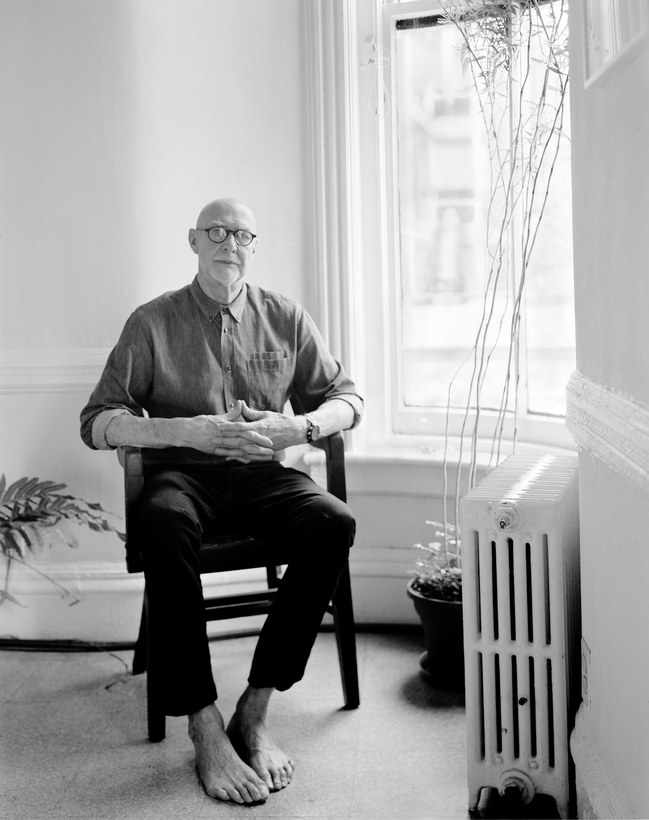A Memorial for Douglas Crimp: Mourning and Militancy
Saturday, November 2, 2019
Memorial begins at 1pm
New York, NY 10003
Please join family and friends in honoring the life and mourning the death of Douglas Crimp, who died on July 5th at age 74 after a long illness, which he met with uncommon grace. Much beloved by students and colleagues at the University of Rochester, where he was the Fanny Knapp Allen professor of Art History and Professor of Visual and Cultural Studies. World renowned as a scholar, writer, lecturer, and critic in visual art, dance, film, and queer studies. Author of numerous books and essays, many of which are classics in their fields. He could be found at a ballet, opera, concert, exhibition or some combination of these nearly every day. Strongly influenced by the gay liberation movement of the early 1970s, he became an inspirational and uncompromising AIDS activist in the ’80’s and ’90s. Survived by his spouse, Yoshiaki Mochizuki, sister Sandi Bloem, brother Greg Crimp, and a wide circle of devoted caregivers and friends, whom he loved deeply.
The afternoon will be filled with performances and remarks by those dear to Douglas.
Douglas requested that his memorial be held at Danspace Project at St. Mark’s Church and contributions be made in his name to Danspace Project. Donate here.
SCHEDULE
1. Judy Hussie-Taylor, Executive Director and Chief Curator, Danspace Project
2. Moment of silence, led by Gregg Bordowitz
3. Sandi Bloem and Greg Crimp
4. Rosalyn Deutsche
5. 3 Satie Spoons
Music: Erik Satie
Choreography: Yvonne Rainer
Performed by Pat Catterson, Emily Coates, Patricia Hoffbauer
6. Gregg Bordowitz
7. Carl d’Aquino
8. Rachel Haidu
9. Nicholas Baume
10. Louise Lawler, “One Minute, for More than One Person”
11. Jonathan Flatley
12. Lynne Cooke
13. Darby English
14. Zoe Leonard
15. Philip Glass, Songs and Poems for Cello Solo (2007), Song VII
Lauren Radnofsky, Cellist and Co-Artistic Director, Ensemble Signal
16. Henry Abelove
17. Lucy Mulroney
18. Marc Siegel
19. Juan Suarez
20. Morgan Bassichis
21. Shiki, Three death haiku
Read by Keith Vincent
22. Richard Wagner, Elegy, WWV 93
Yoshiaki Mochizuki, pianist
Artforum: Gregg Bordowitz on Douglas Crimp
Frieze: Learning How to Be Queer Again: Remembering Douglas Crimp by Thomas J. Lax
Accessibility: Danspace Project’s main entrance is fully wheelchair accessible via ramp. A same-level restroom is available near Danspace Project’s main performance space in the church sanctuary.
Douglas Crimp was born in 1944 in Coeur d’Alene, Idaho. He became an internationally recognized art historian, critic, AIDS activist, and scholar of queer studies. His highly influential essays of the late 1970’s and early 1980’s, especially “Pictures” (1979) theorized postmodernism as a critique of desire and subjectivity in visual representation, helping to radicalize the discourse about contemporary art. In the late 1980’s, in response to the suffering caused by the AIDS epidemic, he became a militant AIDS activist and in 1987 edited an issue of the journal October on “AIDS: Cultural Analysis/Cultural Activism.” Published later as a book, the issue brought Douglas’s ideas about postmodernism to bear on AIDS, engaging in urgent struggles over representations of the disease and of homosexuality. Arguing against aestheticizing and “phobic” images of people with AIDS, Douglas said, “We don’t need to transcend the epidemic; we need to end the epidemic.” But the AIDS epidemic also led Douglas to revise some of his earlier aesthetic ideas. As he writes in the introduction to On the Museum’s Ruins, a collection of his postmodernism essays, “ultimately it was the specter of death that revealed to me the limits of my conception of postmodernism.” If radical art is going to become part of social praxis, he says, it must move outside the conventional institutions of artistic distribution and reception and change the way art functions in society. Following his departure as an editor of October, he became a professor of art history and of visual and cultural studies at the University of Rochester. He gave talks and wrote essays about the films of Andy Warhol, the dance of Yvonne Rainer, among many other topics. He married Yoshiaki Mochizuki. In 2016, he published Before Pictures, a memoir that weaves together his early artistic and sexual experimentation in downtown Manhattan. His collected essays about dance and about dance on film will be published in the spring by Dancing Foxes Press.
